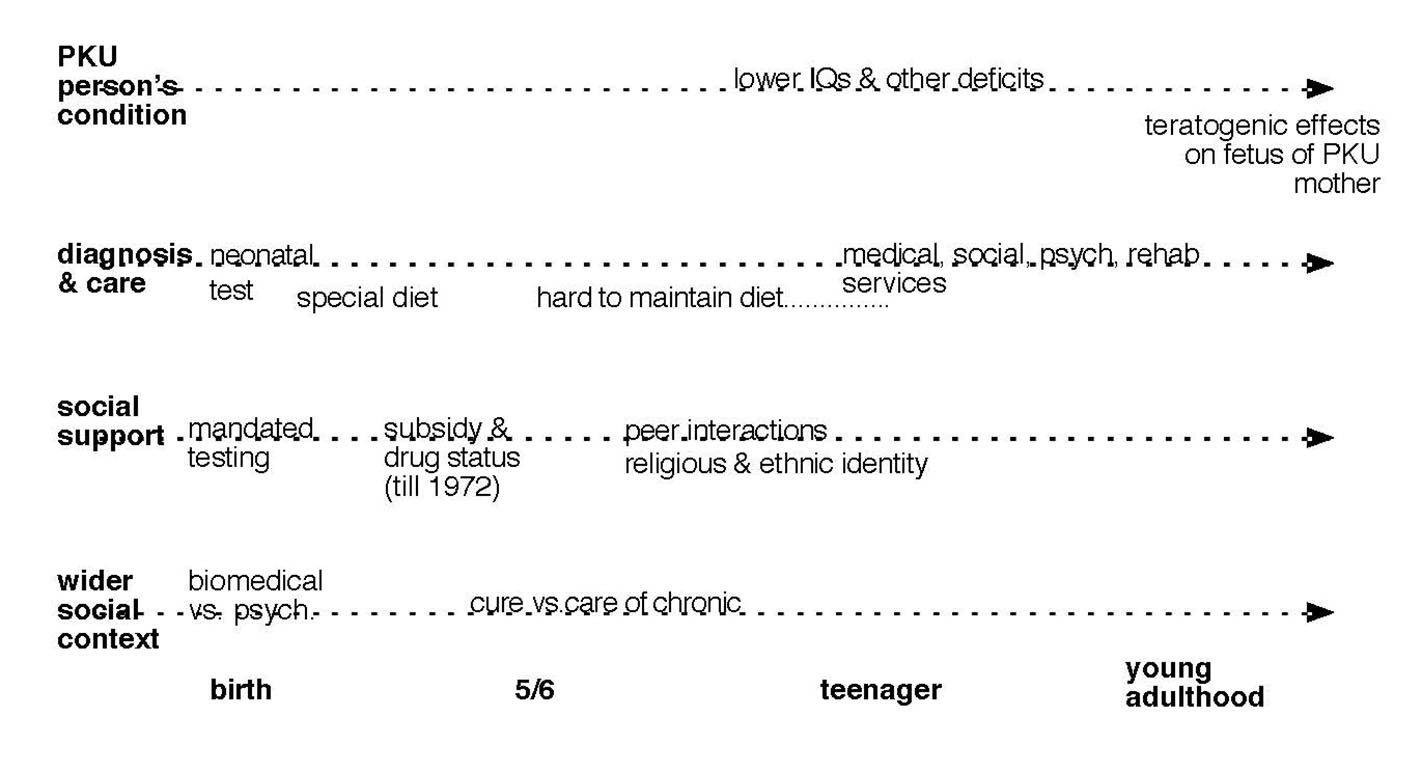Intersecting Processes
Depiction of Intersecting Processes helps students and developers of research projects:Diagramming Steps
1. For some account of change over time (either in history or over a life course), identify important events, developments, and connections between them2. Invent categories to group the events and developments, typically ranging from ones at the more personal level, through community institutions and mode of making a livelihood to wider context
3. Arrange the events and developments as well as possible given the information available on parallel strands from earliest time to latest time (see example below)
4. Draw dotted lines across strands to show connections between events and developments (e.g., X makes Y more likely)
5. Identify connections about which you want to know more
6. Note where these instructions were hard to put into practice
7. Discuss with others the resulting diagrams as well as areas for further inquiry (#5) and development of the activity (#6)
(See example of an Intersecting Processes diagram on next page. Brief account from which it was derived: PKU is a condition that many teachers about biology in its social context invoke to demonstrate that genetic does not mean unchangeable. Until the 1960s people with the PKU gene always suffered severe mental retardation. But now the brain damage can be averted through detection of newborns with high levels of the amino acid phenylalanine followed by a special phenylalanine-free diet. Yet, as Paul and Brosco's (2013) history of PKU screening describes, the certainty of severe retardation has been replaced by a chronic disease with a new set of problems. Screening of newborns became routine quite rapidly during the 1960s and 70s, in part because of the hope in conditions such as PKU for biomedical cure to replace psychological care of people with mental illness.

Intersecting processes over the life course of people diagnosed with PKU (with cross-connections not shown)
But there has remained a struggle in the USA to secure health insurance coverage for the special diet past the early pre-school years and to enlist family and peers to support PKU individuals staying on that diet through adolescence and into adulthood. Cognitive and other deficits lead to the need for various rehabilitation services. For women who do not maintain the diet well and become pregnant, high levels of phenylalanine adversely affect the development of their non-PKU fetuses. This so-called maternal PKU is a public health concern that did not previously exist.)
Paul, D. B. and Brosco, J. P. (2013). The PKU Paradox: A Short History of a Genetic Disease. Baltimore: Johns Hopkins University.
Taylor, P. J. (2005). Unruly Complexity: Ecology, Interpretation, Engagement. Chicago: University of Chicago Press.